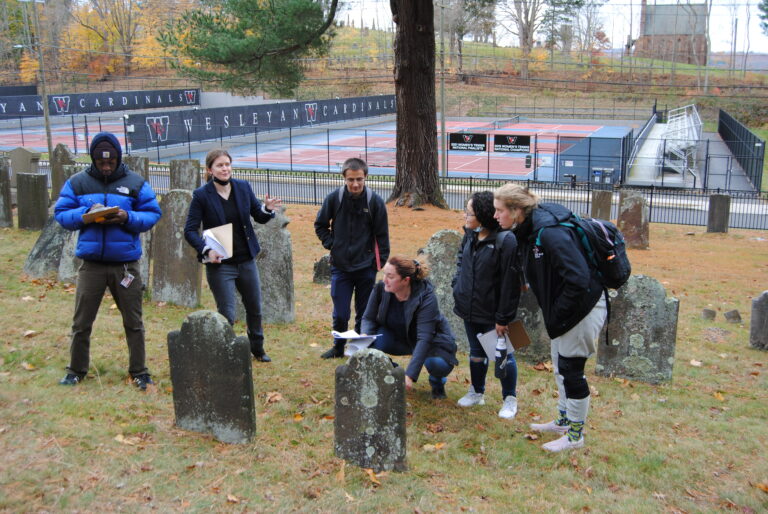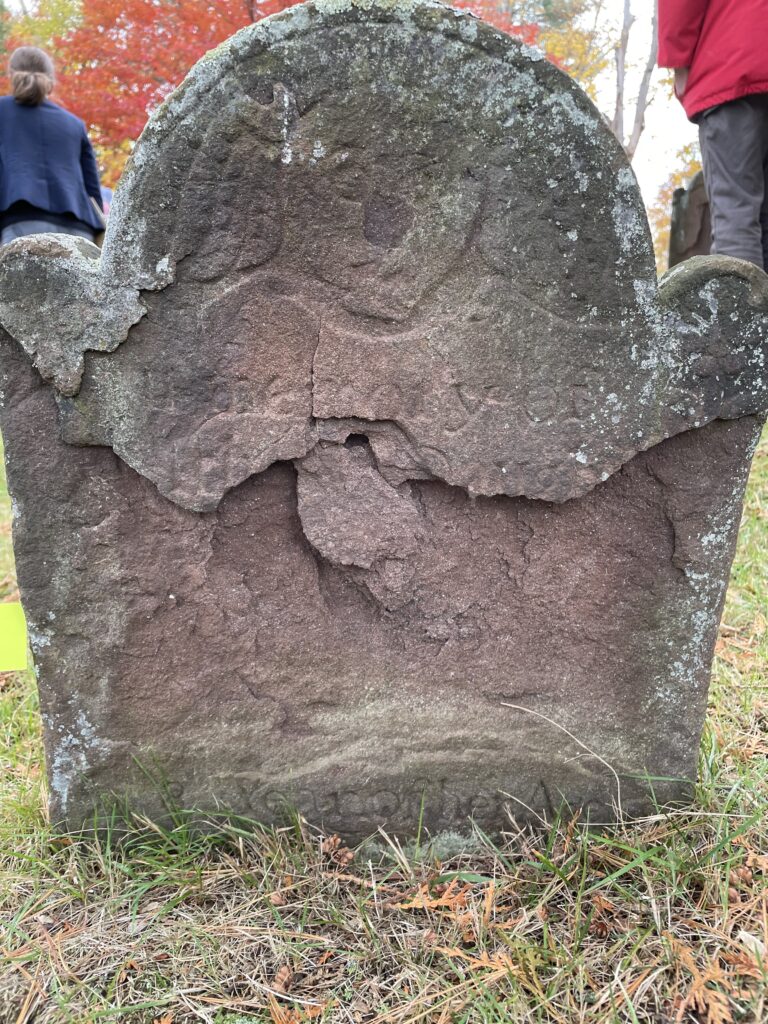Cemetery Field Trip
Fall 2021
Report by Kiran Kowalski (’23)
ARCP 204 Introduction to Archeology covers a broad range of theories and techniques that make up the field of archeology, and students have the opportunity to put what they learn into action at the local scale. Previous Wesleyan archeology classes in the 1970s and 2010s have taken part in excavations of 19th century homes where Route 9 now stands, as well as of the Beman Triangle, a historically black neighborhood in Middletown. As part of this tradition, our class took a field trip to the Washington Street Cemetery to document local gravestones. The cemetery is just a short walk from campus and contains gravestones dating from the 18th century, many of which are in poor condition or are falling apart.
Students were asked to make observations about the gravestone decorations and inscriptions, and take photos of gravestones. These photos were shared with the Middlesex Historical Society in order to preserve information about these gravestones before they are damaged further by erosion. Students collected information on the style of headstone, type of stone used, dimensions of the gravestone, inscriptions (if legible), as well as dates wherever possible. The wide range of late 18th and early 19th century dates for the gravestones allowed us to practice seriation, the relative dating practice that uses artifact styles to develop a chronological sequence. Since the gravestone heads all have distinct motifs that changed through time, we were able to use the shape of the gravestone and other clues to determine when the person may have died in cases when the inscription was illegible or destroyed. Even though many of the inscriptions were difficult to read, it was interesting to learn about the people that have been buried for centuries and make inferences about their lives and deaths. We don’t always think of graveyards as valuable sources of knowledge, but they are a useful way in which students can engage with local history.



